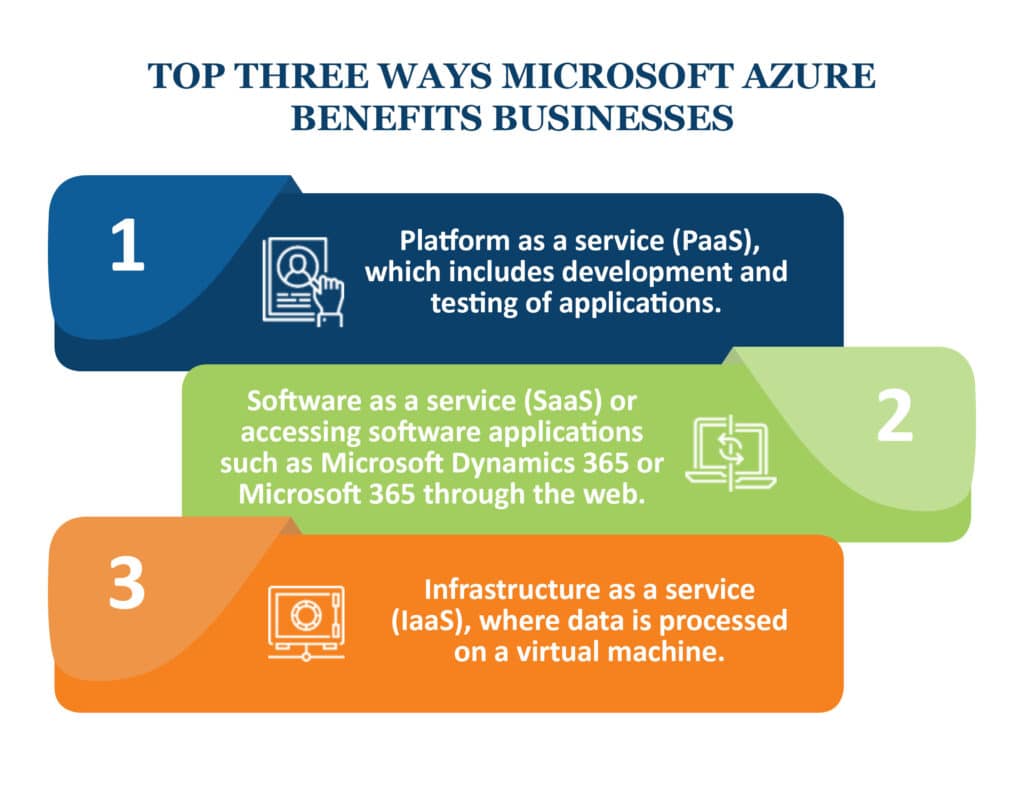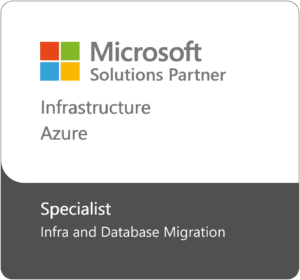Microsoft Azure Benefits Organizations with Flexible, Secure Cloud
Learn about the top benefits of Microsoft Azure, Microsoft’s Cloud Adoption Framework, and how to increase user adoption.
It’s no coincidence that Microsoft Azure is the cloud service that 95% of Fortune 500 companies, including Walmart, FedEx, American Airlines, and AT&T, trust for their cloud and hybrid solutions.
The Azure cloud platform has more than 200 products and cloud services designed to help you bring new solutions to life—to solve today’s challenges and create the future. Build, run, and manage applications across multiple clouds, on-premises, and at the edge, with the tools and frameworks of your choice.
Because Microsoft Azure relies on open-source computing, programmers and developers can use their existing code in a variety of languages. Businesses of any size can use just the cloud-based services and applications that fit their business model, and they pay for only what they use. This makes it a suitable option for companies that want to offload all their computing to the cloud, and those who want to retain some of their computing and storage onsite, also called a “hybrid cloud” mode. From healthcare to financial services to retail, companies in numerous industries use Microsoft Azure’s capabilities to increase their market share and save on infrastructure costs.

Microsoft Azure Cloud is a powerful platform that offers a wide range of benefits, services, and capabilities to organizations. By migrating to Azure, businesses can leverage scalable infrastructure, advanced analytics, AI capabilities, and much more. However, embarking on this cloud journey can be daunting, especially for those who are new to the cloud or just starting out. That’s where our team comes in.
Our team is experienced in helping organizations navigate the cloud landscape and has achieved Microsoft Advanced Specialization for Azure. We understand the challenges and complexities involved in cloud migration, and we have a proven track record of success. By leveraging the Microsoft Cloud Adoption Framework (CAF), we follow a structured approach to guide organizations through their cloud journey.
The Microsoft Cloud Adoption Framework (CAF) is a set of Azure guidelines and best practices designed by Microsoft Azure partners, solution architects, and customers. The CAF’s goal is to help organizations align technical and business strategies around Microsoft Azure to drive long-term, sustainable business outcomes. The CAF has been vetted by over 200 organizations and is robustly supported by Microsoft.
The CAF consists of a curated set of tools and documentation that’s broken down into six stages— corresponding to the typical cloud journey. They are the strategy, plan, ready, adopt, govern, and manage stages. The six modules of the CAF help businesses map out their cloud journey into discrete stages, ensuring IT professionals, cloud architects, and decision-makers have a consistent framework in which to work and form expectations.
It’s important to note that, while the CAF is often explained as linear, the fact is that the six stages represent an iterative, cyclical process. It’s common for organizations to jump in and out of stages as they make progress in different areas or need to go back and address workloads in earlier stages.
There are many benefits to be gained from following the CAF, but here are our top 3:
With our expertise, we can assist in planning the migration, designing the architecture, implementing the solution, and providing ongoing support and management. We take a holistic view, ensuring that your organization’s unique requirements are met while aligning with industry best practices and standards.
Security is a critical aspect of any cloud strategy. When moving to the cloud, organizations need to ensure that their data and applications are protected. By partnering with us, you gain a trusted ally that aligns with your security objectives.
Our team follows Microsoft’s recommended security practices to ensure a robust and secure cloud foundation. We can help implement advanced security measures, such as identity and access management, encryption, network security, and threat detection. By integrating these security measures into your Azure environment, we help safeguard your organization’s assets.
Moving to the cloud is not just about technology; it also involves ensuring that users embrace the new platform and derive value from it. User adoption is a crucial factor in the success of any cloud migration.
Our team understands the importance of user adoption and change management. We provide training, workshops, and resources to help your employees adapt to the new cloud environment. By fostering a culture of learning and collaboration, we ensure that your organization fully realizes Azure Cloud benefits.
Additionally, we help organizations track and measure key metrics to assess the success of their cloud migration. We can provide insights into cost optimization, performance improvements, scalability, and reliability. These metrics allow you to make data-driven decisions and continuously enhance your cloud environment.
 For organizations already in the cloud, there are opportunities to review and optimize their current footprint. This helps identify areas for improvement, enhance security, and explore new avenues for transformation and modernization.
For organizations already in the cloud, there are opportunities to review and optimize their current footprint. This helps identify areas for improvement, enhance security, and explore new avenues for transformation and modernization.
Our team can conduct a comprehensive assessment of your existing cloud infrastructure, applications, and workloads. By analyzing usage patterns, performance metrics, and cost optimization opportunities, we can identify areas where efficiency gains can be made. We can also help you leverage advanced cloud services, such as serverless computing, AI, and data analytics, to further transform your organization.
To further discuss the benefits of Microsoft Azure, reach out to Velosio today.